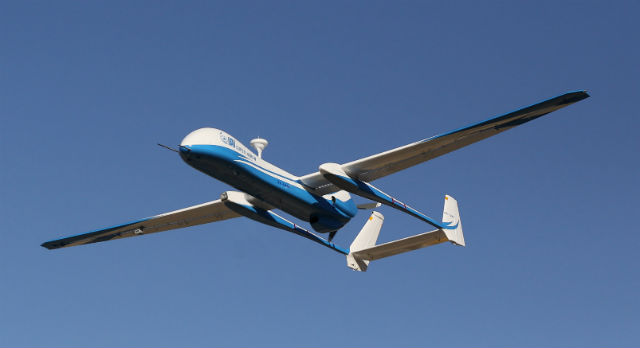Existing operators of the Israel Aerospace Industries Heron unmanned air system are being offered a way of getting the advanced performance of the heavy fuel engine-powered Super Heron, by taking the avionics package of the older version and "transplanting" it into the new model's enlarged fuselage.
Unveiled at the Singapore air show in February, the Super Heron HF has a new, more efficient aerodynamic design featuring streamlined curves, a larger engine bay and a long wing with winglets.

Israel Aerospace Industries
The larger engine bay was designed to carry two engine types – either the existing Rotax 914, or a new heavy fuel design from Italian company DieselJet SRL. The latter, 200hp (147kW) engine is based on an automotive diesel engine made by Fiat, which is currently undergoing aviation certification by EASA.
According to IAI, the new engine's increased weight over the Rotax system is compensated for by better fuel consumption.
The Super Heron has a maximum take-off weight of 1,500kg (3,300lb), including payloads of up to 450kg, and an increased speed of above 150kt (278km/h).
As the avionics assembly of the new model is identical to that used by the previous baseline Heron, IAI is offering current customers the option to buy the new airframe and heavy fuel engine as part of an upgrade package, which would also retain their existing ground systems for the type.
Meanwhile, the French air force has upgraded some of the payloads carried by its six Airbus Defence & Space/IAI Harfang UAS – type is based on the Heron. The service has flown the medium-altitude, long-endurance type since 2007, including in support of operations in Afghanistan, Libya and Mali.
IAI has been offering its enhanced Heron TP to France in co-operation with Dassault, but an evaluation was frozen as a result of budgetary and political factors.
Source: Flight International























